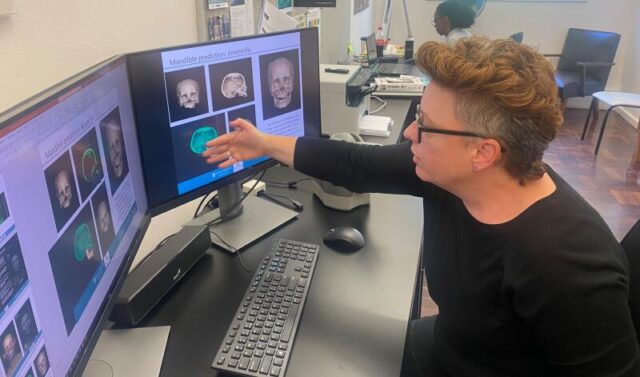With an estimated 7,000 unidentified bodies in South Africa’s laboratories, researchers at Stellenbosch University have called for increased training of forensic officials to avert the “silent mass disaster” looming.
WITH an estimated 7,000 unidentified bodies in South Africa’s laboratories, researchers at Stellenbosch University (SU) have called for increased training of forensic officials to avert the “silent mass disaster” looming.
Dr Kathryn Smith, an interdisciplinary visual and forensic artist and chairperson of the Visual Arts Department at the university, said the number of missing and unidentified bodies lying in laboratories across the country was closer to 10,000 bodies each year.
In the absence of a single database where information on missing and unidentified people could be compared and when there was just one forensic pathologist for every million people, the extent of this “silent mass disaster” could not be accurately quantified, she said.
The identification of bodies requires close co-operation between the SAPS and the Health Department’s Forensic Pathology Services.
“For skeletal remains, a facial reconstruction might be the only opportunity to identify an unknown person. But reconstructing a face from the skull is labour-intensive and time-consuming and may require expert cleaning prior to anthropological analysis and reconstruction.”
Smith said this is why she advocated for the training of forensic officers in post-mortem facial photography as a cost-effective intervention.
Professor Sibusiso Moyo, the deputy vice-chancellor for Research, Innovation and Postgraduate Studies at the institution, said training more people to work across disciplines in this field would help address the gaps that now delay the identification of bodies.
“The work of forensic humanitarian initiatives identifying the disappeared and those seeking a better life who perish trying to cross international borders is showing that secondary identifiers such as clothing, personal effects and facial imaging are perhaps more useful in complex, low-resourced contexts such as ours,” said Smith.
“We need to think creatively about forensic identification in our unique context. We can’t always rely on the methods accepted as scientific and primary, such as fingerprints, DNA and dental. DNA is expensive and most South Africans don’t receive regular dental care, so comparative records don’t exist in most cases.”
DA spokesperson on health in Gauteng, Jack Bloom, said that in Gauteng alone there were more than 900 unidentified bodies, partly due to the ineffective systems. “In 2006, a computerised system to assist with the identification of bodies was promised, but nothing has come of it. The MEC has again made the promise in her recent Budget speech, and one can only hope that promise will be fulfilled now.”








